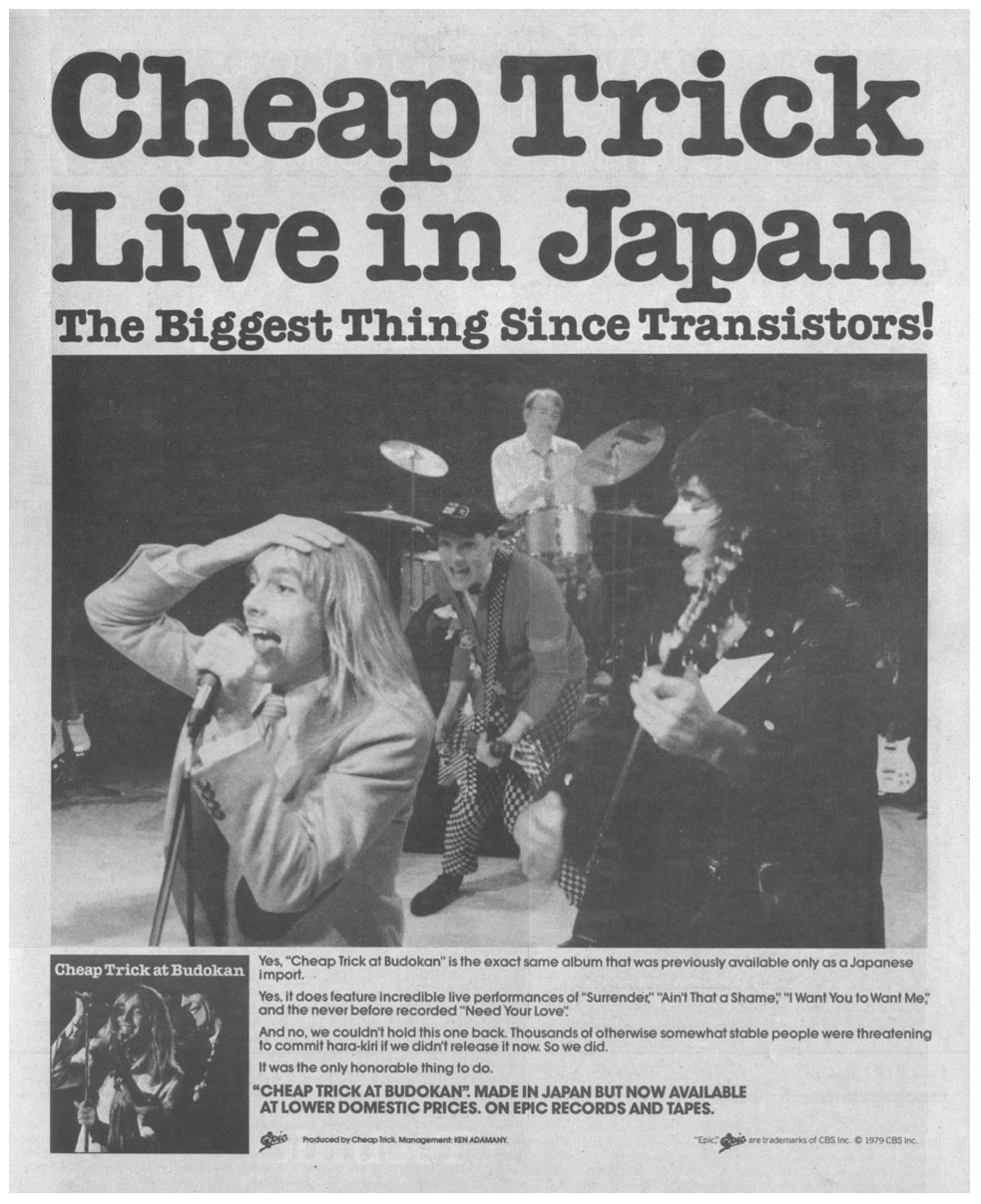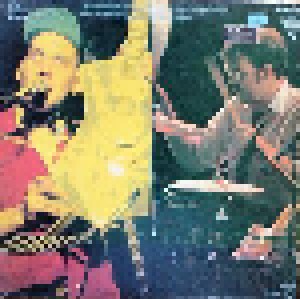


The Beatles connection follows them to this day. When Smashing Pumpkins played their first Budokan show in 1998, they did “I Want You to Want Me” for an encore. “We had the biggest-selling import of all time, and our record company said, ‘Wait a minute - people are paying three times what they would pay for a normal record for this.’ “ Nielsen credits the success of “Live at Budokan” with the band’s longevity, not so much because it made them money, but because of its impact on musicians who would later become pillars of alternative rock. “Suddenly, radio stations all over the country were playing it,” Nielsen says. Then Rolling Stone ran an article about how big Cheap Trick were in Japan and a DJ in Boston started playing “I Want You to Want Me” from the import on his radio show.

Eventually, everyone from Bob Dylan to Chic would put out a “Live at Budokan” album. Usually, if you got excited and stood up, the guards would shove you down.” Cheap Trick’s 1979 album “Live at Budokan” not only made the band stars in the United States but turned Budokan into an international rock mecca. “When we played, I think it was the first time they allowed the audience to stand up. “Before we played there in ’78 and again in ’79, I think Deep Purple were there, and I heard a kid got killed - the crowd went nuts and somebody got crushed,” says Rick Nielsen, the guitarist and point man for Cheap Trick, from his home in Rockford. In the decade to follow, more Western artists would play Budokan, but the hallowed hall didn’t really make an impression on international rock fans until the late 1970s, when a relatively obscure guitar band from Rockford, Illinois performed there. Rightwingers protested the show but in the end the prerogatives of capitalism prevailed. The first pop group to ever play Nippon Budokan Hall in Tokyo was The Beatles in 1966, a concert that caused quite a scandal because of the auditoriums’ semisacred status as Japan’s premier martial-arts venue.


 0 kommentar(er)
0 kommentar(er)
